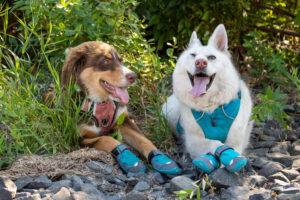
As a dog owner, you’ve likely come across situations where protective footwear for your furry friend becomes a necessity. Whether it’s hot pavement, icy sidewalks, or rough terrain, dog shoes can offer essential paw protection. However, getting your pup to embrace this new accessory may require a bit of training and patience. Join us as we explore tips and tricks for training your dog to wear shoes comfortably and confidently.
1. Gradual Introduction: Take It Step by Step
Just like any training, introducing your dog to shoes should be a gradual process. Start by allowing your pup to investigate the shoes without wearing them. Let them sniff and inspect the footwear to get familiar with it. This helps reduce any initial anxiety.
2. The Right Fit: Choose Comfortable Shoes
Ensure you’ve selected the right size and style of shoes for your dog. Ill-fitting or uncomfortable shoes can deter your pup from wearing them. Measure your dog’s paws carefully and choose shoes that allow for a snug yet comfortable fit.
3. Positive Associations: Make It Fun!
Associate the act of putting on shoes with positive experiences. Use treats and praise to reward your dog when they allow you to put the shoes on. Gradually increase the time your dog wears them, all while offering treats and praise to create positive associations.
4. Short Practice Sessions: Keep It Short and Sweet
At first, limit the duration of shoe-wearing sessions. Start with just a few minutes, gradually increasing the time as your dog becomes more comfortable. This prevents your pup from becoming overwhelmed.
5. Practice Indoors: A Safe Start
Begin practicing indoors, in a familiar and controlled environment. This helps your dog get used to walking in shoes without the added challenges of outdoor distractions.
6. Outdoor Adventures: Gradual Transition
Once your dog is comfortable wearing shoes indoors, take them for short walks outside. Be patient, and don’t be surprised if they initially walk a bit clumsily. With practice, they’ll adapt to their new footwear.
7. Check for Comfort: Regular Inspections
During and after each use, check your dog’s paws and the shoes for any signs of discomfort or irritation. Make sure the shoes haven’t shifted or caused any rubbing.
Remember, every dog is unique, and the time it takes for them to adapt to wearing shoes may vary. Stay patient, use positive reinforcement, and make the training experience enjoyable for your pup. Soon enough, they’ll be strutting their stuff in their stylish new footwear, and you can both enjoy the added protection and comfort they provide. Happy training!